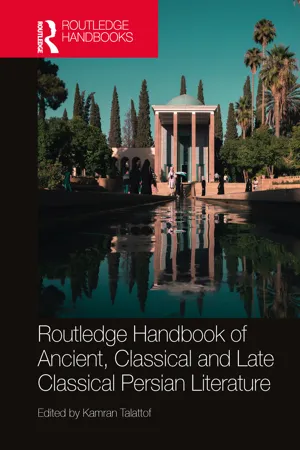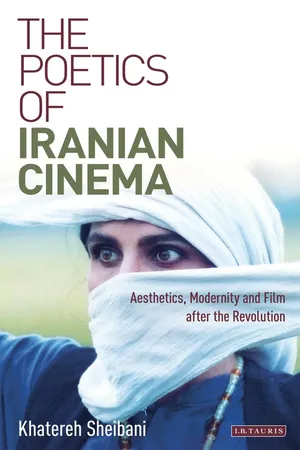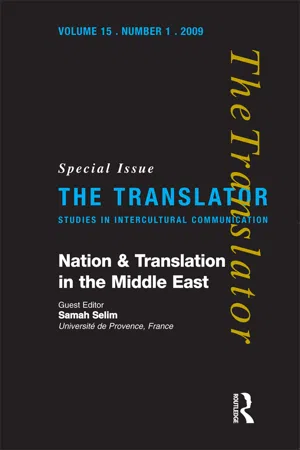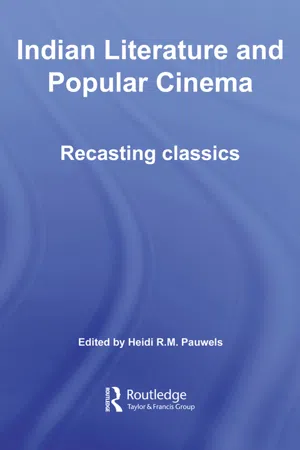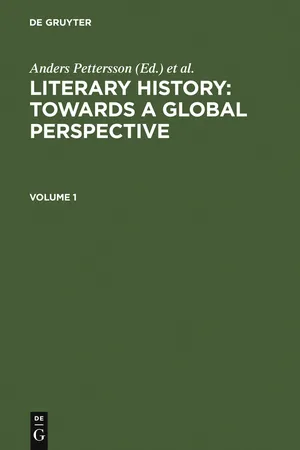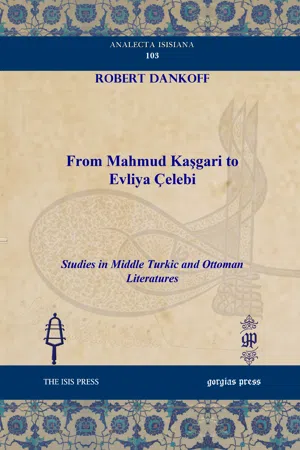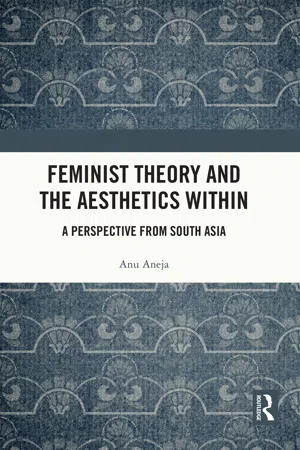Literature
Ghazal
A ghazal is a poetic form with origins in Arabic poetry that has been widely used in Persian, Urdu, and other languages. It typically consists of rhyming couplets and a refrain, with each couplet functioning as a separate poem. Ghazals often explore themes of love, loss, and longing, and are known for their intricate rhyme schemes and emotional depth.
Written by Perlego with AI-assistance
Related key terms
1 of 5
9 Key excerpts on "Ghazal"
- Kamran Talattof(Author)
- 2023(Publication Date)
- Routledge(Publisher)
21In fact, much of what constitutes the early thematic makeup of the Ghazal within the qaṣīda of the Arab poet is redefined and reconstituted in the Persian-speaking world. With the incursion of Arabs into Iran in the late 7th century, a cultural and literary dialogue was necessarily established, and as such, Persian poets became very familiar with these poetics, adopting them and changing them accordingly to mirror their own cultural poetics, even though Ghazal-like work as a court ditty of sorts, as previously mentioned, and as a musical idea, was already in existence.Ghazal: A Persian (and Indo-Persian) Definition
The Ghazal is the crown jewel of Persian (and Indo-Persian) poetry beginning in the mid- to late 12th century and dominantly so in its zenith – and after – in the 14th century by which time the qaṣīda was long dismissed as the primal poetic form. Ghazal poetry became the “normative mode” of expression in the Persian-speaking world by the beginning of the 13th century when the erstwhile charitable inclinations of the court had given way to reluctance to recognize the panegyric as a necessity. As a genre, it has been utilized by poets for epideictic purposes of praise or blame, philosophical ponderings, and even ribaldry. However, its main purpose from the very early stages of its development had been predominantly lyrical, which celebrated life, mourned youth-no-more, and praised a beloved – and all the thematic minutiae inherent in the nuanced understandings of a beloved: all commensurate with a regional understanding of an enigmatic beloved, with nothing if not a labyrinthine social paradigm cognizant of its nuances. As pertains to the stages in the development of the Ghazal, it was ultimately influenced most by Sufism22 beginning in the 12th century with the poetry of Sanā’ī (d.1130) and his magnificent, and large, Sufi propagandic epic Ḥadīqat al-Ḥaqīqat (The Garden of Truth), which is “a loose collection of parables and excursuses on reason, gnosis, trust in God, love, philosophy, heaven and hell, etc.”23 Thematically his Ghazals are a mirror of what is seen in his Ḥadīqat al-Ḥaqīqat- eBook - PDF
The Poetics of Iranian Cinema
Aesthetics, Modernity and Film After the Revolution
- Khatereh Sheibani(Author)
- 2011(Publication Date)
- I.B. Tauris(Publisher)
11 However, this is not true for Ghazal as a lyrical mode. Generally speaking, Ghazal is a mono-rhyme poem whose subject is love. It has seven to fifteen lines, in which the first two hemistichs and the second hemistich in each following line rhyme. In terms of poetic form, Ghazal resembles qasi-dih . The main difference between these two lyrical modes is that qasi-dih is considered ‘public’ poetry while Ghazal is ‘private’ poetry, 12 and towards the last line of a Ghazal the poet mentions his or her name. Ghazal began to flourish in the twelfth century, representing both mystical and secular love thematics. These two different paths overlap frequently and the result is a deliberate ambiguity. Other factors enhance the sense of ambiguity. For instance, the gender of the beloved is mostly ambiguous since Persian language does not formally distinguish gender. The sexual ambiguity of the beloved, who is usually called Saqi , is a particular subject of discussion in the Ghazals of Sa’di of Shiraz, which are sometimes read as homosexual lyrics. The secular Ghazal reached its highest point in Sa’di’s poems. In the fourteenth century Hafiz transformed Ghazal both in form and content. In his poetry, the two streams of secular and mystical Ghazal merged to shape a new form of Ghazal . The imagery of secular and spiritual poetry is now combined and extended to convey mul-tiple levels of meaning. In contrast to other poetic modes, Hafiz’s Ghazal s have no thematic or formal harmony. Baha u-din Khuram-Shahi comments that in Hafiz’s poetry 13 the verses look semantically fragmented. 14 This semantic fragmentation of each Ghazal couplet gives it a semantic autonomy. This formal characteristic was new in Persian poetics, although it existed in the structure of the Qur’an. 15 Indeed, a lack of semantic unity is the most obvious common stylis-tic feature of the Qur’an and Hafiz’s Divan . - eBook - ePub
From Shamanism to Sufism
Women, Islam and Culture in Central Asia
- Razia Sultanova(Author)
- 2011(Publication Date)
- I.B. Tauris(Publisher)
faqirs or musicians at Shah Abdul Latif’s shrine in Bhit Shah. They mimic the heroines of Shah’s poetry.• The myths of female lovers, such as Sassi, Sohni, and Hir, used as aesthetic devices to speak of broader social, political, caste, and gender issues.127How applicable this list is to female Sufism in Central Asia is discussed in chapters below.14. SUFI POETRY IN CENTRAL ASIA: Ghazal AND FEMALE POETSGhazalBefore we consider the issue of female Sufi poetry in Central Asia, it is necessary to define what Sufi poetry is.128 The dominant form of Sufi poetry in Central Asia is Ghazal.So what is Ghazal as a poetic form? There are many definitions, the first of which, by Shamsiddin Qays, dates from the beginning of the twelfth century: ‘Ghazal in its initial meaning is affection towards women, and also friendship with them. . .’ The Encyclopedia of Islam defines Ghazal as ‘a song, the elegy of love, frequently also an erotic-elegiac genre, the song of man to woman’.129 At the same time, the history of this poetic genre, beginning in the ninth century with Arabic poetry, developing and blooming on Persian soil (Attar, Saadi, Hafez)130 and coming to marvellous fruition in the Turkic medieval literature (Nasimi, Navoiy, Fuzuli, Babur), testifies not only to the widest area of its propagation, but also the universal poetics of the genre, which in the process of this development outgrew the boundaries of its origin. If we summarise theoretical studies of Ghazal as a poetic genre, its formal elements, standardised from the times of Saadi and Hafez, are namely: writing Ghazal by bayts (two verses, meaning in Arabic ‘a house’), rhyming bayts according to the formula A-A, B-A, C-A, and so on, the use of Radif (monorhyme), and also Takhallus (reference to the name of the author, usually in the last bayt).Semantically, Ghazal is a purely lyric, plotless form, which characterises, first of all, an internal state, but not external action; therefore, it is to a greater degree a statement about a state rather than a process. The semantics of Ghazal are characterised by the presence of two semantic poles: the ‘I’ of the lyric hero and the ‘you’ or ‘he/she’ of his beloved, which are mutually impenetrable. Usually, between these two poles there is a space of separation, a break, unattainability, and so on. This separation creates the poetic, emotional stress of the Ghazal. Furthermore, there are other relationships in the Ghazal: ‘I’ – ‘rival’, ‘I’ – ‘supporters’ (e.g. sheikh, wine-waiter, doctor). To be more schematic, it is possible to reduce the functional structure of Ghazal to the following universal structure: ‘I’ – the subject of a statement; ‘you/he/she’ – the object of the statement; the statement (a field between ‘I’ and ‘you/he/she’); supportive forces (doctor, wine-waiter, wind); and obstructive forces (rival, enemy, etc.).131 - eBook - PDF
- Samah Selim(Author)
- 2017(Publication Date)
- Routledge(Publisher)
Originating in the taghazzul or erotic portion of the Arabic ode (< qasidah ), the Persian Ghazal places the tale of two specific lovers in a generic template with the use of a metaphoric register that can be unpacked by a reader/listener equipped with the aesthetic apparatus to decode the poem. Reminiscent of the romances that describe the love between indi viduals from different communities, the beloved in the Ghazal also often has the attributes of an infidel, i.e. Zoroastrian, Christian or Hindu, depending on the cultural orientation and geographic location of the poet, which explicitly creates a binary opposition that the poet-lover must grapple with. However, in the transfer of the love lyric from Arabic into Persian the question of the beloved’s gender becomes a problematic subject, primarily due to linguistic exigencies of Persian, for whereas in the Arabic Ghazal the beloved is in the majority of instances a woman as indicated by the language, in the Persian literary tradition the beloved is grammatically ambiguous and also more often a boy. As Roman Jakobson’s work has shown, grammatical gender can be manipulated to convey certain cultural messages, “as when language is turned away from its instrumental or communicative functions and used in poetry and mythology” (Simon 1996:18). In the case of classical Arabic literature, Julie S. Meisami writes: Sunil Sharma 91 The convention of homoerotic poetry, however, must be placed in its proper perspective. The lovely youths addressed and extolled in the Persian Ghazal , like the ladies to whom such Arab poets as Bashshar and al-‘Abbas ibn al-Ahnaf dedicated their verses, should not be construed as literal participants in a factual love affair (or the poems as revelatory of the poet’s sexual proclivities). Like Salma and Hind, they provide the occasion for the poet’s song and the pretext for his presentation of the various states of love. - eBook - ePub
Indian Literature and Popular Cinema
Recasting Classics
- Heidi R.M. Pauwels(Author)
- 2007(Publication Date)
- Routledge(Publisher)
One of the characteristics of the Ghazal is that each single couplet can encapsulate a different thought, independent of each other. Thus, couplets of a single Ghazal can address many different issues. In the Urdu Ghazal tradition when all or a sequence of couplets focus on one single idea, it is an exception and there is a separate name for it: gh azal-musalsal, or “continuous Ghazal.” We note that in order to create a gh azal-musalsal from the “romantic” Ghazals, couplets with mystical meanings are excluded. Whereas typically a single couplet can be interpreted on a secular as well as a mystical level, there are couplets that defy dual interpretation. Unsurprisingly, we find that such couplets are excluded from the Ghazals in the movies and TV, because they are inappropriate for the popular film’s purposes. To illustrate this point, we will analyze two of the Ghazals common in the film and in the serial, and review those specific couplets that have been excluded from both - Nalini Natarajan(Author)
- 1996(Publication Date)
- Greenwood(Publisher)
Azra Abbas (b. 1950) is particularly concerned with exploring the rela- tionship of women’s bodies to their emotions. Ishrat Afreen examines the tension between her newfound confidence as a woman and a patriarchal reality. Fatimah Husain writes about the disagreements within the women’s movement. Other good poets include Tanveer Anjum (b. 1956), A’ishah Aslam, Mahmoodah Gha- ziyah, Yasmeen Hameed, Shahidah Hasan, and Parveen Fana Sayyid. Zahidah Zaidi (b. 1930) writes in India. ‘‘NEW’’ POETRY Somewhat implicitly, this survey has viewed the genre of the Ghazal as the common thread that binds contemporary Urdu literature to its immediate past and to the more distant classical tradition. A more detailed examination of the literary debates surrounding the Ghazal will help us to review the development of Urdu literature to the present and hopefully provide us with some insights into future prospects. As previously detailed, Hali’s project laid the foundations for modifying the traditional Ghazal to serve the interests of reform. This trend was accompanied by the denigration of the Ghazal as a pleasurable but nonserious form of poetry, especially when the precolonial legacy of the Ghazal became too constricting or seductive. Instead, the narrative poem was utilized to preach the reformist mes- sage. Similarly, Iqbal essentially continued the tradition of the non-Ghazal poem. Taking Hali’s logic further, the progressives criticized the Ghazal as a reaction- ary and feudal genre, while they paradoxically continued to write Ghazals in an attempt to make the Ghazal conform to ideological imperatives. The opposition to the creative straitjacket of progressive ideology came from poets associated with the Halqa-yi Arbab-i Zauq, but they also chose to express themselves largely through the non-Ghazal poem.- eBook - PDF
Literary History: Towards a Global Perspective
Volume 1: Notions of Literature Across Cultures. Volume 2: Literary Genres: An Intercultural Approach. Volume 3+4: Literary Interactions in the Modern World 1+2
- Anders Pettersson, Gunilla Lindberg-Wada, Margareta Petersson, Stefan Helgesson(Authors)
- 2011(Publication Date)
- De Gruyter(Publisher)
At this stage the amal-gamation of profane and Sufi imagery was complete. The complex, Classi-cal Persian Ghazal had been shaped, a genre that is characterized by a well-balanced ambiguity, an equilibrium between the mystic and the worldly and between the exhortative and the aesthetic. The apogee of this kind of Ghazal is found in the dlvän of Häfiz (d. ca. 1390). This should, in-deed, be regarded as a distinct genre, but it is difficult to assign a descrip-tive name to it, so I shall just call it the Classical Ghazal. 51 In cultural contexts, equilibrium is probably an unstable state. In combi-nation with profound changes of a political and religious character, the lit-erary scene soon changed again. During the rule of the Safavids, in the six-teenth and seventeenth centuries, the original Sunni Sufi orders were sup-pressed and more or less disappeared from the central parts of the newly 49 See Utas, The Aesthetic Use of New Persian. 50 E.g., Muhammad TaqI Bahär, Sabk-shinäsl yä tärlkh-i tatavvur-i nathr-i färsi, vols. 1-3 (Tehran: Amir Kablr 1337). 51 For further discussion, see Meisami, Medieval Persian Court Poetry, pp. 237-98, as well as her Structure and Meaning in Medieval Arabic and Persian Poetry (London: Taylor and Francis, 2003), pp. 45-54. Genres in Persian Literature 900-1900 2 2 9 shaped, pre-modern state of Iran. Sufi poetry as well as court poetry of the traditional types found less fertile soil, and many poets moved to the Mughal Empire of India. The Sufi interpretation of poetry, both previously composed and newly written, was weakened and a more and more aes-thetic reading gained the upper hand. Now, the so-called Indian style (,sabk-i hindl) was introduced. The Classical Ghazal remained dominant but the emphasis on rhetorical devices, formal elaboration and aesthetic refine-ment increased unabated. Poetry was often enjoyed in fragments (mu-qatta 'ät) and even single verses (fard) of markedly aesthetic character. - eBook - PDF
From Mahmud Ka?gari to Evliya Çelebi
Studies in Middle Turkic and Ottoman Literatures
- Robert Dankoff(Author)
- 2009(Publication Date)
- Gorgias Press(Publisher)
(p. 6) The Ghazal gives delight to the people of insight; The Ghazal is the rose of the garden of excellence. Hunting the gazelle of the Ghazal is not easy; The people of mystical knowledge (' irfdn ) do not deny the Ghazal. The Ghazal discloses the poet's powers; The Ghazal increases the poet's reputation. Although the heart be disposed to many kinds of poems Choose from among them the kind that is the Ghazal! For the Ghazal is the adornment of every assembly; The Ghazal is the craft (son'at) of the people of wisdom... 'The later version of this romance by Yahyâ Bey (d. 983/1575), recently published, lacks Ghazals. The earlier one by Mustafa Darir (768/1366) contains them (Iz, pp. 591-605), all in the same meter as the masnavï (remel 1). 220 F R O M M A H M U D K A § G A R I T O E V L Î Y A Ç E L E B I Fuziili's Ley II ve Mecnùn (963/1556) represents the culmination of the Turkish romantic masnavi tradition. There are 22 Ghazals, 2 murabba's, and 2 munâcâts. The use in all of the lyrics of the poet's own makhlas is consonant with Fuzull's tendency in the poem as a whole: to raise the personal and human love-tragedy to the plane of mystical longing and ethereal aspiration. While generalizing this aspect, which was begun by §eyhi, Fuzuli reduces the number of meters, using only remel 2 (1, 7, 9-10), hezec 1 long (3, 8, second murabba', 12, 18-19, 21), hezec 2 (4), muctess (11) muzâri' 1 (6, first and second munàcàt), and remel 1 long (the remainder). 1. Leyli bemoans her separation from Mecnûn (line 715) 2. Mecnûn bemoans his separation from Leyli (line 789) 3. Mecnun asks his friends to excuse him for his love-madness (line 889) 4. Mecnûn's father counsels him to be reasonable (line 972) 5. Mecnûn asks his father to excuse him (line 1016) 7. Mecnûn at the Ka'ba asks God not to cure his love-malady (line 1123) 6. Leyli addressing the cloud complains of her love (line 1398) 8. Mecnùn complains to Nevfel of the faithless world (line 1485) I 9. - eBook - ePub
Feminist Theory and the Aesthetics Within
A Perspective from South Asia
- Anu Aneja(Author)
- 2021(Publication Date)
- Routledge India(Publisher)
Along the way, various kindred terms – such as lutf, suroor and raahat – may be employed to describe different types and degrees of pleasure experienced by a gradually transformed audience. A Ghazal that eases the soul with raahat does so by offering respite from the commonplace burdens of a quotidian existence through the elevating experience of art. On the other hand, suroor conveys sensory and sensual pleasures such as those associated with music, rhythm and melody, while lutf suggests an indescribable soul-satisfying, uplifting form of joy (‘ lutf utthana ’ literally translates as ‘lifting/carrying joy’). It is evident, then, that despite the Ghazal’s embrace of an existential melancholia or gham as a primary mazmun, its thematic frame is well clad in a fabric of stirring aesthetic pleasures. If the Ghazal’s archetypal anguished lover finds himself buried under the afflictions of gham, unable to find passage from a state of being to one of becoming, that existential crisis appears aggravated when the narratorial voice of the poem is that of a woman trapped in oppressive heteropatriarchy. As we have seen through some examples, it is the loss of an access to an agentic self rather than the gham of the absent lover that defines the nature of the existential quandary for the female persona of twentieth-century feminist Urdu poetry. The articulation of gendered experiences through lyrical modes becomes a way of transgressing this ontological crisis by initiating a shift from a locus of objectification to one of self-actuation. Such an ontological shift realized through ‘poetic speech’ transports the female subject beyond the circumference of pain to the possibility of reclamation and of pleasures promised in the process of self-actualization, undoing in this process the distinction between speaking and doing and between discursive shifts and their material effects
Index pages curate the most relevant extracts from our library of academic textbooks. They’ve been created using an in-house natural language model (NLM), each adding context and meaning to key research topics.
